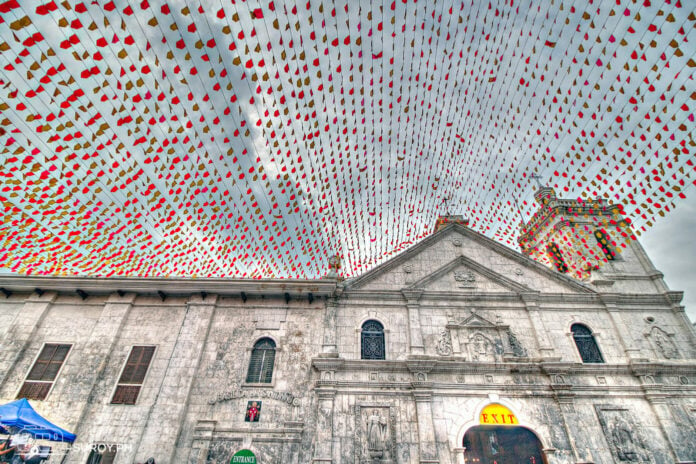The Basilica Minore del Sto. Niño de Cebu, commonly known as the Sto. Niño Basilica is one of the most significant religious landmarks in the Philippines. Located in Cebu City, this Basilica is the oldest Roman Catholic church in the country and serves as a spiritual and cultural center for millions of Filipino devotees. The basilica is home to the revered image of the Sto. Niño de Cebu is a focal point of religious fervor and historical significance.
Best known as the place for Sinulog, it was founded in 1565 by Fray Andrés de Urdaneta and Fray Diego de Herrera. The Church of the Infant is located beside Magellan’s Cross and is within walking distance of Plaza Independencia.
Historical Background
Origins of the Sto. Niño Image
The image of the Sto. Niño de Cebu, a statue of the Child Jesus, was a gift from Portuguese explorer Ferdinand Magellan to Rajah Humabon and his wife during their baptism in 1521. This event marked the beginning of Christianity in the Philippines. The statue, believed to have miraculous powers, survived a fire that destroyed the original church built on the site in 1565.
Establishment of the Basilica
The Basilica Minore del Santo Niño de Cebu was established by Miguel López de Legazpi and Fray Andrés de Urdaneta in 1565, making it the oldest Roman Catholic church in the Philippines. The current structure, which has undergone several renovations, was designated a basilica in 1965 by Pope Paul VI, recognizing its historical and spiritual importance.
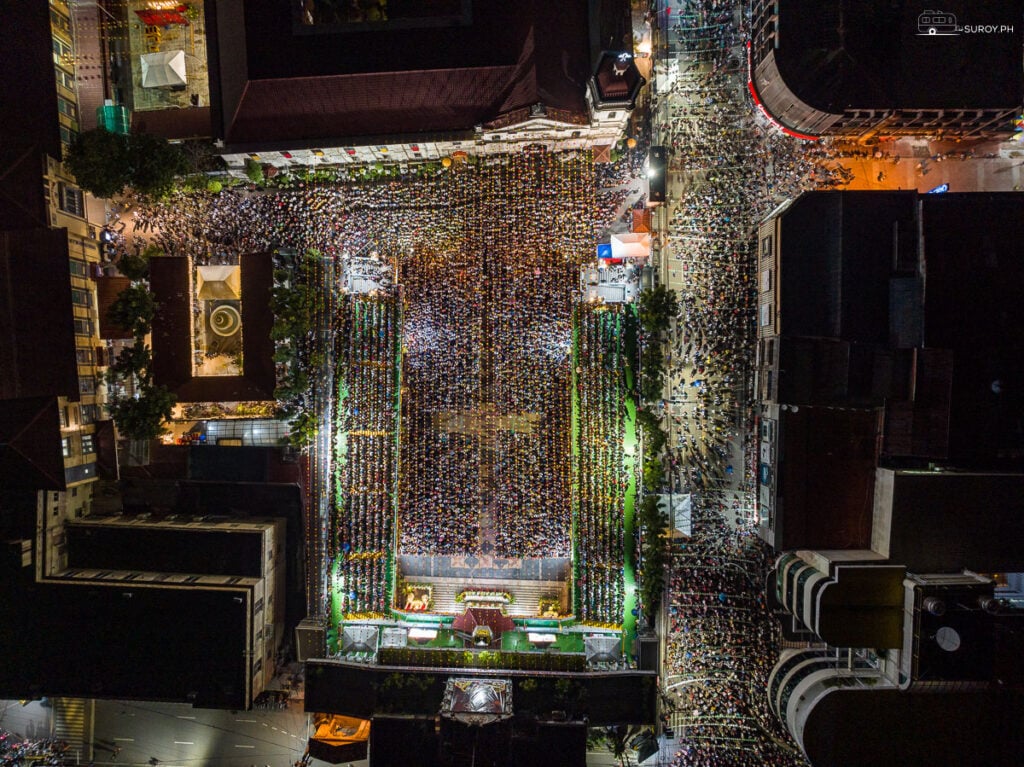
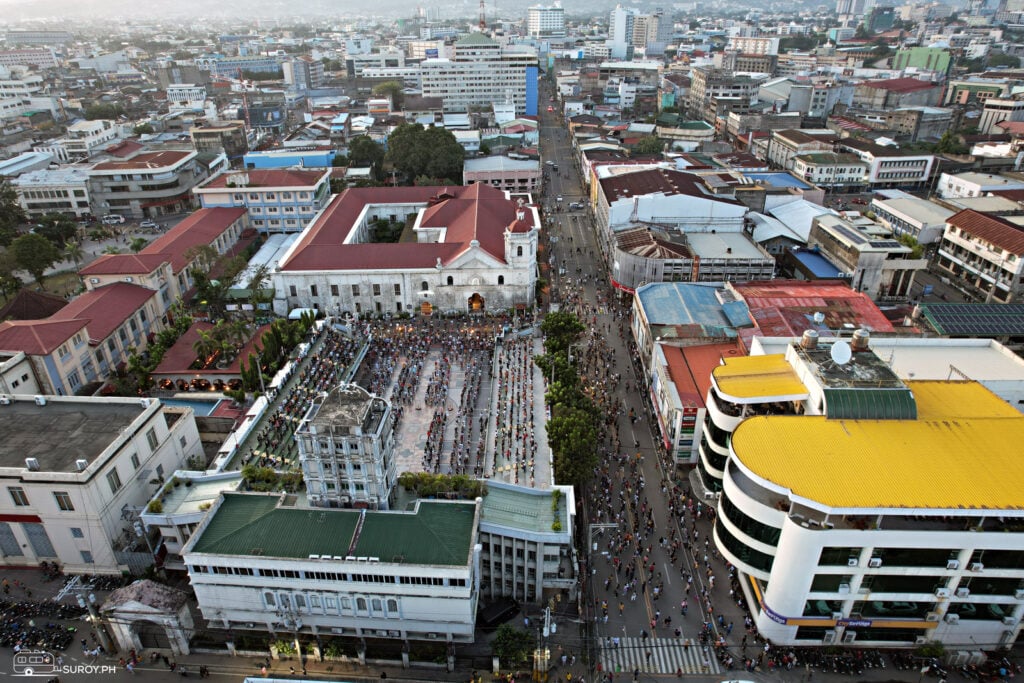
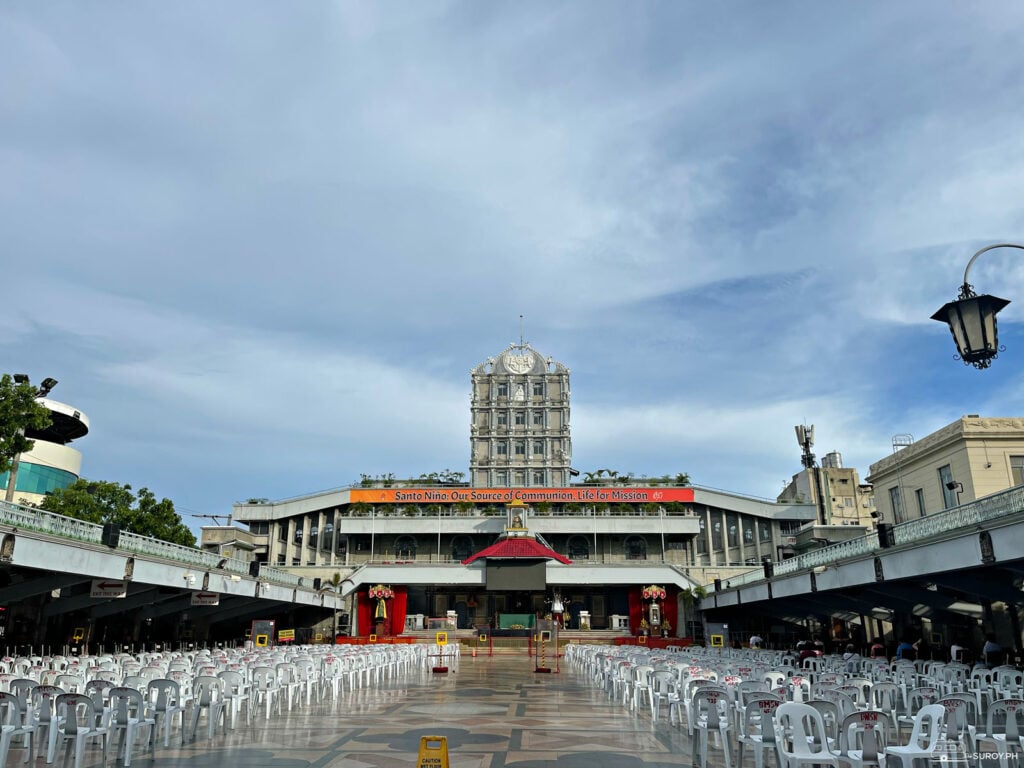
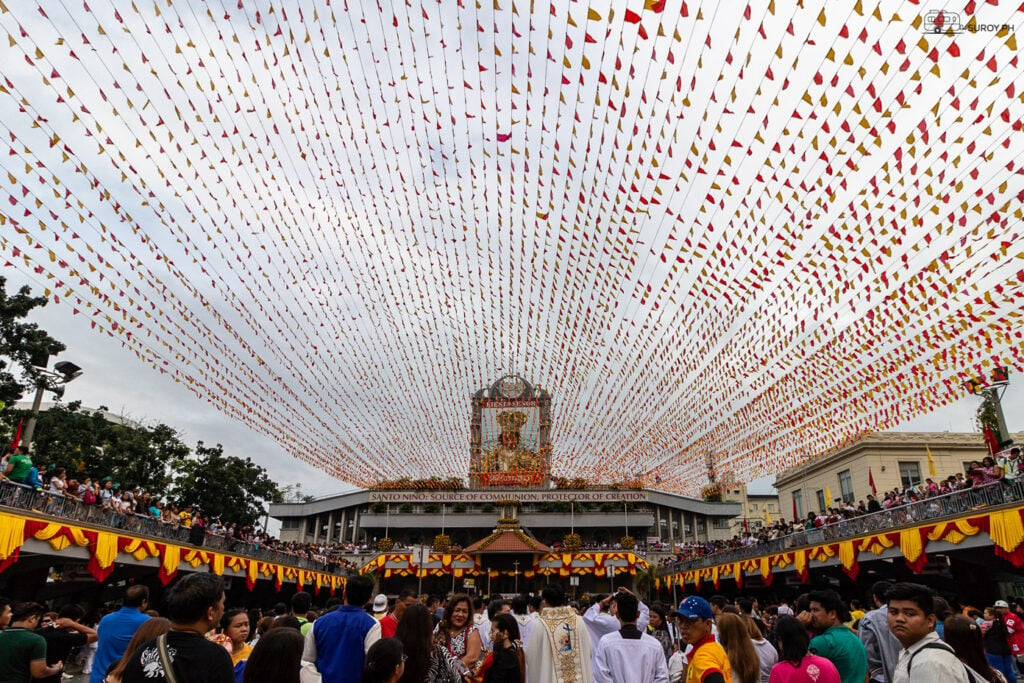
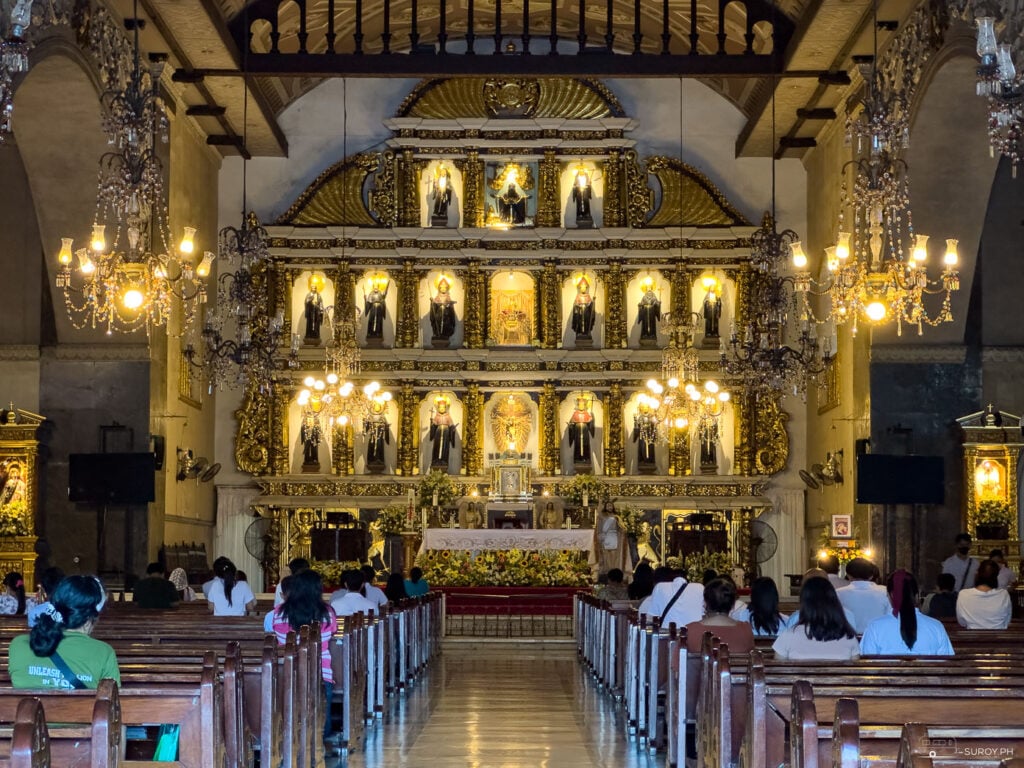
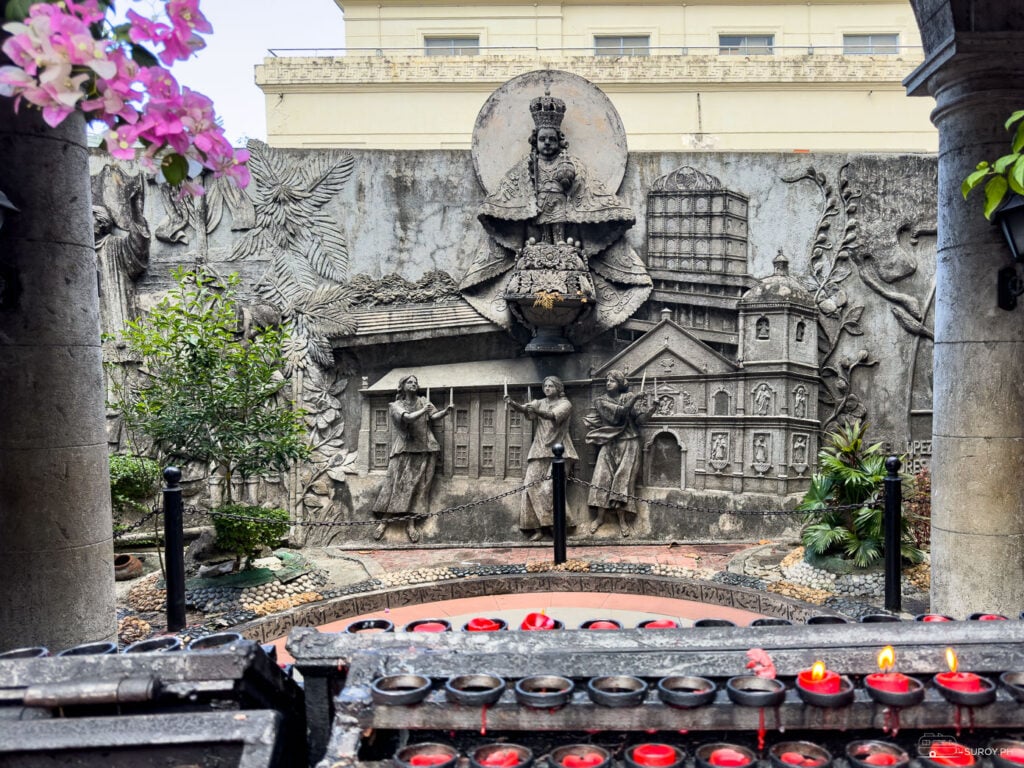
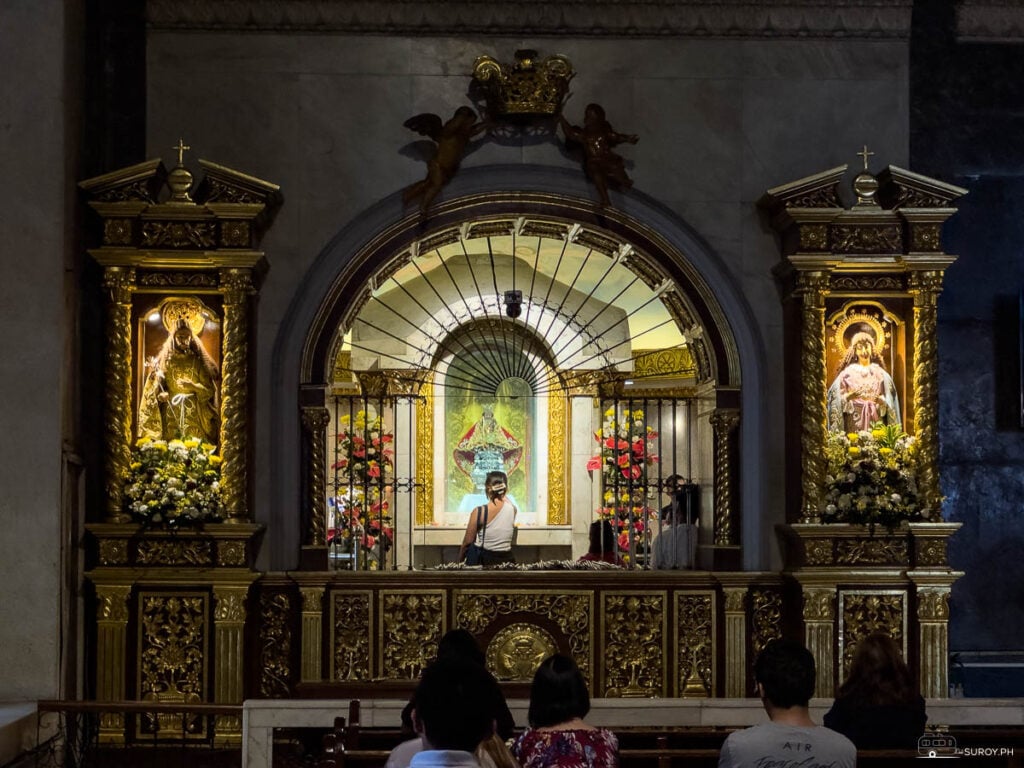
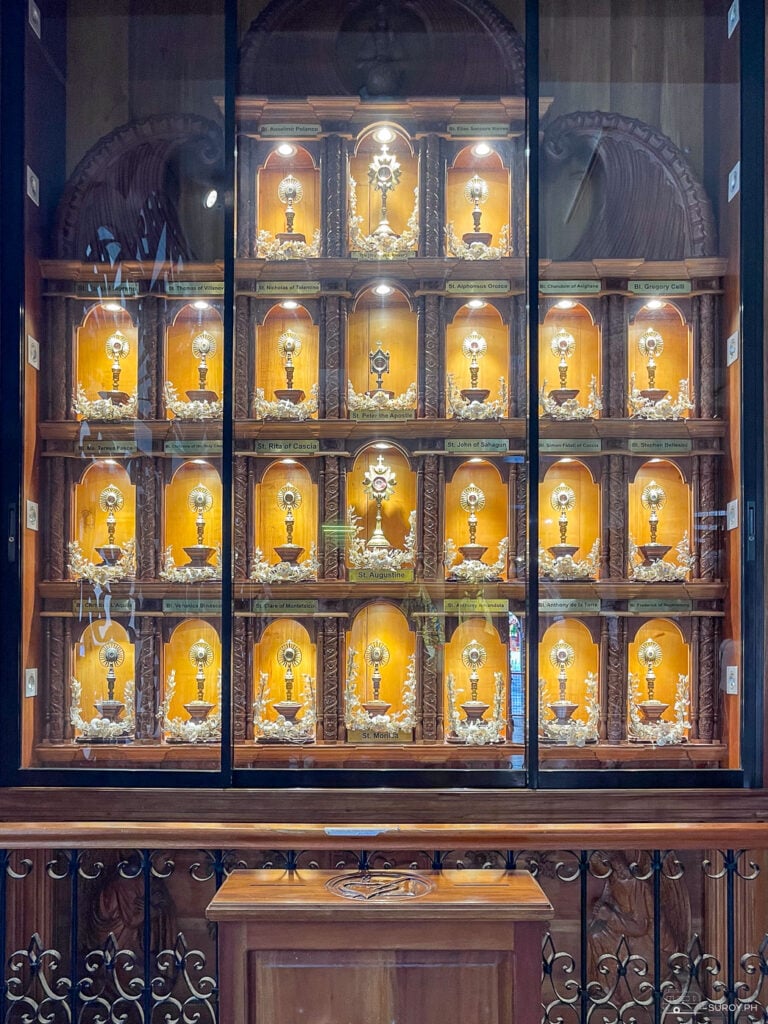
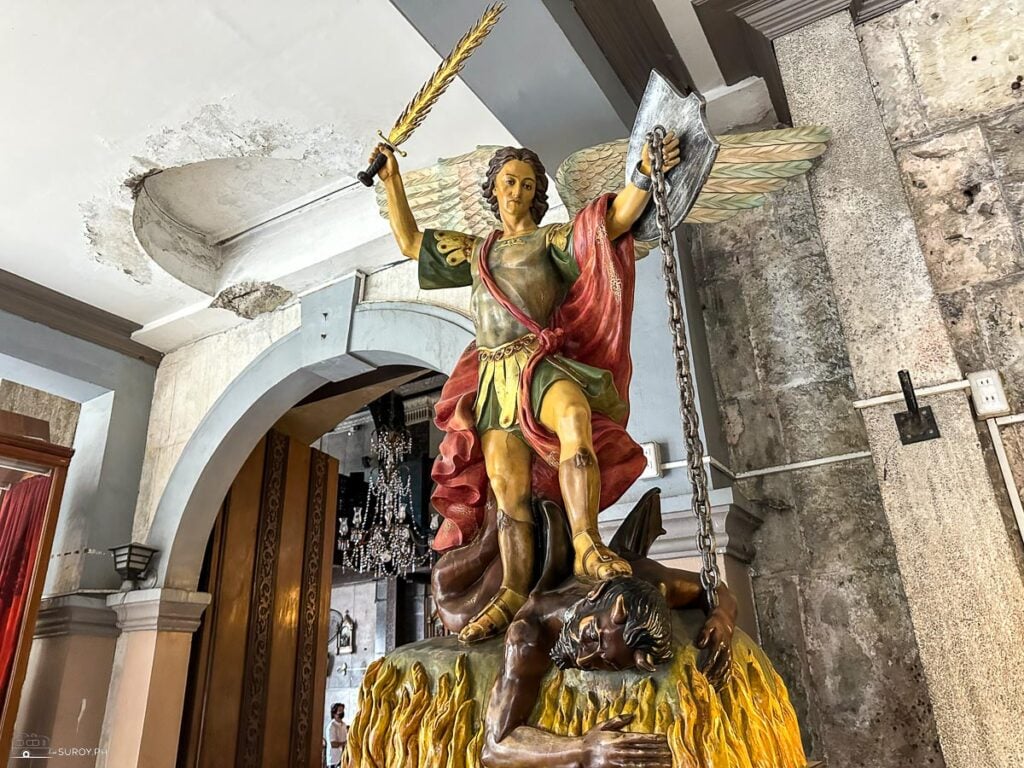
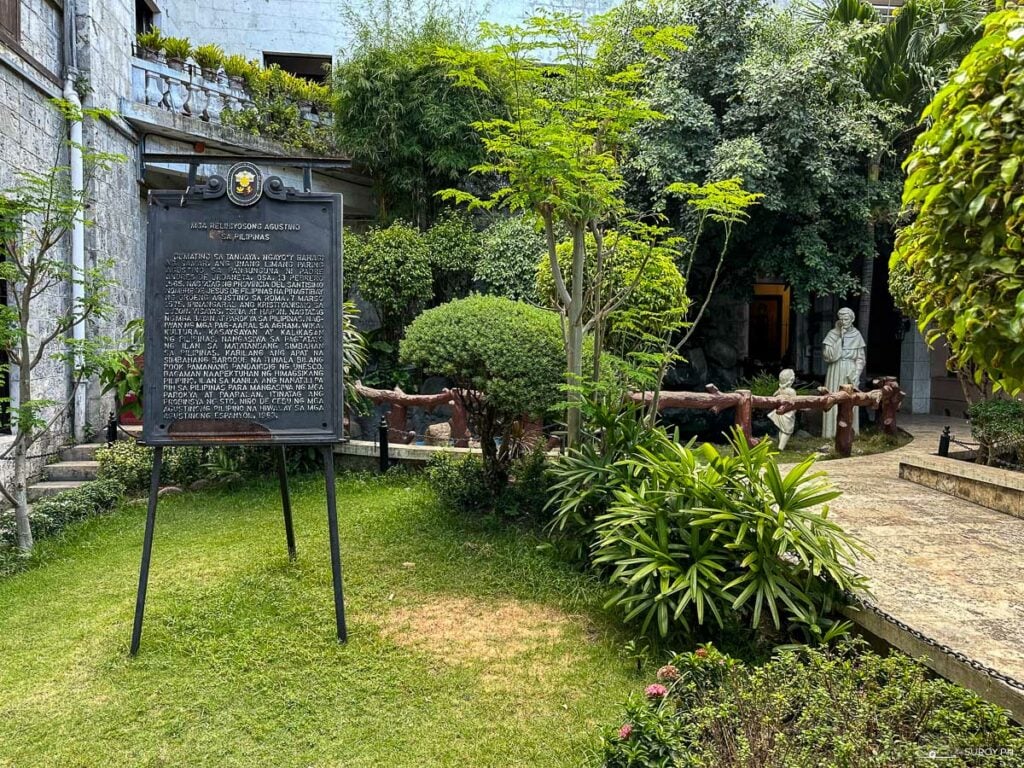
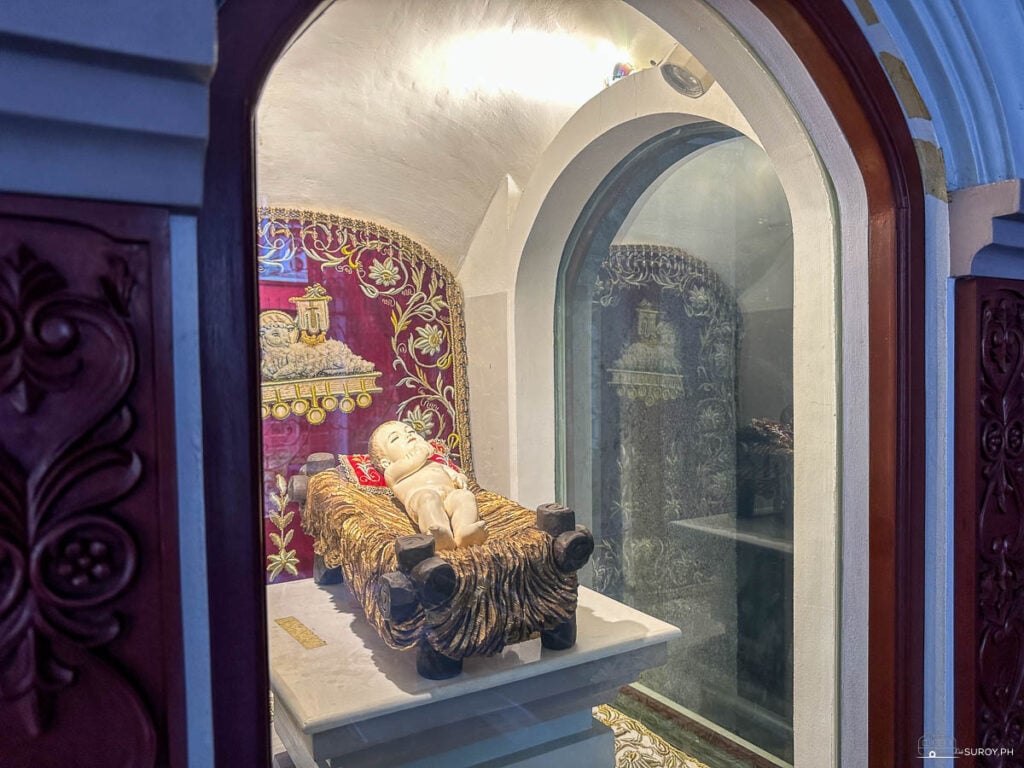

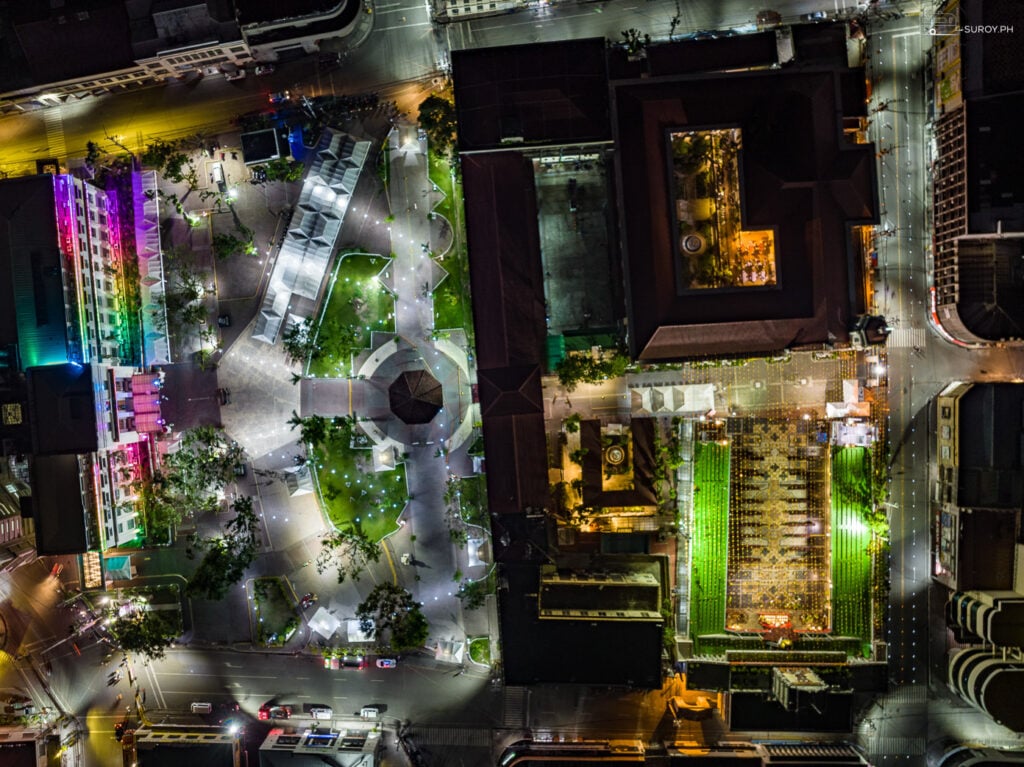
The Miraculous Sto. Niño
The Sto. Niño statue enshrined in the basilica is believed to be miraculous, drawing pilgrims from all over the world. Devotees come to seek blessings, offer prayers, and pay homage to the Holy Child, whose image is synonymous with hope, faith, and resilience.
Devotional Practices
- Novena: The nine-day novena in honor of the Sto. Niño is a significant religious observance, culminating in the grand Sinulog Festival.
- Offerings: Devotees offer flowers, candles, and other tokens of devotion at the foot of the statue.
- Prayers: The basilica provides a serene environment for personal prayers and reflections, fostering a deep spiritual connection with the Sto. Niño.
Architectural Highlights
The Facade
The facade of the Basilica Minore del Sto. Niño combines a blend of Muslim, Romanesque, and neo-classical influences, reflecting the diverse cultural heritage of Cebu. The intricate carvings and statues adorning the facade depict various religious scenes, enhancing its historical and aesthetic value.
The Interior
Inside the Basilica, visitors can admire the stunning altar, which houses the revered image of the Sto. Niño. The basilica also features beautiful stained glass windows, ornate chandeliers, and religious artworks that create a serene and reverent atmosphere. The ceiling murals, painted by renowned Filipino artists, depict the history of Christianity in Cebu and the miracles attributed to the Sto. Niño.
Religious and Cultural Significance
The Sinulog Festival or Sto. Niño Fiesta
The annual Fiesta Señor, celebrated in January, is the Basilica Minore del Sto. Niño’s biggest and most anticipated event. This festival, also known as the Sinulog Festival, attracts millions of devotees and tourists from around the world who participate in processions, novena masses, and cultural performances to honor the Sto. Niño. The festival is a vibrant display of faith, culture, and community spirit.
The Lighting of Candles
One of the most touching and symbolic practices at the Basilica Minore del Sto. Niño is the lighting of candles (Dagkutanan in Bisaya). This tradition is deeply rooted in the Catholic faith, representing prayers, wishes, and the hope for divine intervention. The Basilica has a designated area where visitors can light candles, each flame symbolizing a fervent prayer or a message to the divine. The sight of numerous candles burning brightly creates a powerful visual representation of the collective faith and devotion of the people.
Pilgrimage Site
The Basilica is a major pilgrimage site for Catholics all over the Philippines and beyond. Devotees visit the basilica to pray, offer candles, and seek blessings from the Santo Niño. The Pilgrim Center, located within the basilica complex, accommodates many visitors, especially during the Sinulog Festival.
Visiting the Basilica Minore del Sto. Niño de Cebu
Location and Accessibility
The Basilica Minore del Santo Niño de Cebu is located in the historic center of Cebu City, making it easily accessible to both locals and tourists. The basilica is situated on Osmeña Boulevard, a short distance from other notable landmarks such as Magellan’s Cross and Fort San Pedro.
Hours and Admission
The Basilica Minore del Sto. Niño is open daily from 6:00 AM to 7:00 PM on weekdays and 4:00 AM to 8:00 PM on weekends. Admission is free, but donations are welcome to support the Basilica’s maintenance and activities.
The museum inside the church is open every Monday to Friday from 8:00 AM to 11:45 AM and 1:00 PM to 4:45 PM.
Basilica Minore del Sto. Niño de Cebu Mass Schedule (2024)
The Basilica Minore del Sto. Niño offers multiple masses and religious services throughout the day. Here is an updated schedule of mass in the church:
- Weekdays
- 7:00 AM – Cebuano
- 8:00 AM – English
- 12:15 PM – Cebuano
- 5:30 PM – English
- Saturdays
- 5:30 PM – Anticipated Mass
- Weekends
- 5:30 AM – Cebuano
- 6:30 AM – Cebuano
- 8:00 AM – English
- 9:30 AM – English
- 11:00 AM – Cebuano
- 12:30 PM – English
- 2:00 PM – Cebuano
- 3:30 PM – Cebuano
- 5:00 PM – English
- 6:30 PM – English
Tips for Visitors
- Dress Modestly: As a place of worship, visitors are expected to dress modestly. Sleeveless tops, shorts, and mini-skirts are discouraged.
- Respect the Space: Maintain a respectful demeanor, especially during religious services. Photography is allowed, but be mindful of the worshippers.
- Join a Guided Tour: Consider joining a guided tour to fully appreciate the Basilica’s historical and cultural significance. Knowledgeable guides can provide valuable insights into the Basilica’s history and architecture.
Nearby Attractions
Visit some of the nearby attractions, which offer a mix of history, culture, and modern experiences, perfect for a well-rounded trip to Cebu.
- Magellan’s Cross: A symbol of Cebu’s Christianization, this historic site is just a few steps away from the Basilica. It marks the location where Portuguese explorer Ferdinand Magellan planted a cross in 1521.
- Fort San Pedro: A short walk from the Basilica, this is the oldest triangular bastion fort in the country, built by the Spanish as a military defense structure in the early 17th century.
- Cebu Metropolitan Cathedral: Located nearby, this beautiful church is the seat of the Archdiocese of Cebu and boasts a rich religious and cultural history.
- National Museum of the Philippines – Cebu: Housed in the restored Malacañang sa Sugbo, the museum showcases Cebu’s rich archaeological, cultural, and historical heritage, making it a must-visit for history lovers.
- Museo Sugbo: A former provincial jail converted into a museum showcasing Cebu’s historical and archaeological heritage.
- Colon Street: The oldest street in the Philippines, where you can experience the vibrant street life of Cebu and see old movie theaters and historical sites.
- Casa Gorordo Museum: A heritage home that offers a glimpse into 19th-century Cebuano life. It features well-preserved artifacts and furnishings from the time.
- Cebu Heritage Monument: Located in Parian, this monument showcases significant historical events in Cebu’s past through a beautiful sculpture.
- Yap-Sandiego Ancestral House – One of the oldest houses in Cebu, this ancestral home offers a fascinating look into the city’s architectural and cultural history.
- Cebu Ocean Park: Just a short drive away, Cebu Ocean Park is a marine theme park featuring interactive exhibits, an oceanarium, and various marine species perfect for families and children.
Conclusion
Visiting the Basilica Minore del Sto. Niño is a journey through Cebu’s rich history and cultural heritage and a deeply moving experience of faith and devotion. As you walk through its hallowed halls, light a candle, and gaze upon the revered image of the Santo Niño, you become part of a centuries-old tradition that continues to inspire and unite people from all walks of life.
Whether you seek spiritual solace, historical insight, or a moment of peace, the basilica offers a sanctuary that leaves an indelible mark on the heart. Embrace the sacred atmosphere, the vibrant community, and the timeless beauty of this revered site, and let the Basilica Minore del Sto. Niño be a cherished part of your journey in Cebu.
Share your travel experiences and photos using the hashtags #SuroyPH and #DiscoveryPH – we love to hear about your journey!
For more travel inspiration and tips, visit Suroy.ph and follow us on Facebook, Instagram, and TikTok for the latest updates and trending travel posts.

